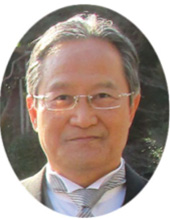 This century has observed a global trend of spectrum shifts toward higher and higher frequencies in various industries such as broadcasting, telecommunications, power electronics, logistics, and medical. How radio-frequency (RF) waves behave is usually explained with sophisticated mathematics involving complex vector, matrix, and calculus, which sometimes keep beginners from getting started. With such a background, Professor Takashi Ohira has developed elegant formulas that can clarify mutual relationships among key parameters for RF engineering. Based on his concept that mathematical elegance will open up lucent vistas and deep insights into physical phenomena, he cracked the dawn of a new era of RF education. He has established lucid formulas and put them into practical lessons.
This century has observed a global trend of spectrum shifts toward higher and higher frequencies in various industries such as broadcasting, telecommunications, power electronics, logistics, and medical. How radio-frequency (RF) waves behave is usually explained with sophisticated mathematics involving complex vector, matrix, and calculus, which sometimes keep beginners from getting started. With such a background, Professor Takashi Ohira has developed elegant formulas that can clarify mutual relationships among key parameters for RF engineering. Based on his concept that mathematical elegance will open up lucent vistas and deep insights into physical phenomena, he cracked the dawn of a new era of RF education. He has established lucid formulas and put them into practical lessons.The Q factor, a basic criterion to characterize RF devices and components, had different definitions in various literature. This was thus often confusing for RF engineers. Focusing on such ambiguity and diversity, he wrote a mysterious quest story entitled What in the World is Q. This masterpiece article won the Minister of Education Prize and was also granted the IEEE Exploration Most Read.
He extended the concept of the kQ product originating from inductive couplers. The new theory, described in terms of general two-port immittance parameters, enables us to predict the power transfer performance of any kind of electromagnetic couplers. His formula was employed by instrument manufacturers and has been successfully installed in practical vector network analyzers on the worldwide market.
He inaugurated a competition program for wireless power transfers for miniature-model vehicles in motion. Young engineers and students learn state-of-the-art RF technologies from the drag-race contest held semi-annually around the country.
He gave on-journal lessons for students to learn how to analyze and design fundamental RF systems just with a pencil and paper without resorting to computer simulations. He has also given more than 30 invited speeches as an IEEE Distinguished Lecturer all over the world. He has created wonderful puzzles providing thought experiments with RF flavor. The most recent series of his puzzles is currently running in IEEE Microwave Magazine every month, giving RF professionals the joy of pondering them. In conclusion, evaluating his outstanding educational contributions to the field of RF engineering, we strongly recommend him to receive this highest honor.